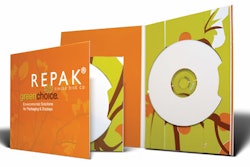Editor's note: Included in the special section on sustainable packaging in the February issue of Packaging World was a story titled Analyzing bioplastic packaging's future. We received the following comment shortly after the story's appearance.
I just finished reading Sterling Anthony’s article on Bioplastics. While I agree that consumers and others are confused, I would like to correct a few errors and omissions.
It is indeed confusing. But your readers should know that they have the tools to make good decisions.
Regards,
Steve Mojo
Executive Director, Biodegradable Products Institute
www.bpiworld.org
I just finished reading Sterling Anthony’s article on Bioplastics. While I agree that consumers and others are confused, I would like to correct a few errors and omissions.
- “Only natural materials are biodegradable.” This is not correct. I call attention to BASF’s Ecoflex, which has a demonstrated track record of biodegradation under aerobic conditions found in a professionally managed composting facility.
- Composting promotes biodegradation under aerobic conditions. While disintegration is an important component in ‘compostability,' it is not the only one. You can find all the requirements in ASTM D6400 or ASTM D6868, which require specific levels of disintegration, biodegradation along with maximum metals and plant safety requirements.
- Few if any materials biodegrade in landfills to a great extent or quickly. The vast majority of today’s landfills are engineered to prevent degradation and biodegradation. In fact, Dr. Willima Rathje, who excavated landfills in the late 1980s, documented 40-year-old newspapers that are still legible, five-year-old lettuce that looked fresh, and 15-year-old hot dogs that still looked to be edible.
- The growing number of “biodegradable claims” (especially in landfills) that we are seeing today reminds me of the early 1980s and 1990s. These claims are not based on sound science, nor do they meet consumer expectations for when the terms are used. My hope is that this round of claims does not end the same way as the last one, when the FTC got involved with numerous lawsuits.
- On the subject of “biobased” or “renewable" content, your readers should know that there is an ASTM test method that can pinpoint the percentage of the carbon in the polymers that is derived from “renewable carbon." This test method is ASTM D6866.
- The above test is of great help in determining if a material is wholly biobased/renewable or only partially. Today we see a range of new materials that are derived from renewable sources, ranging from NatureWorks PLA and Mirel—which are wholly based on agriculture—to blends of traditional polymers with starch and wood fiber, which are not ‘biodegradable’ or compostable—to ethanol-based polyethylene, the newest entrant entrants from Dow and Braskem.
It is indeed confusing. But your readers should know that they have the tools to make good decisions.
Regards,
Steve Mojo
Executive Director, Biodegradable Products Institute
www.bpiworld.org
Companies in this article
























